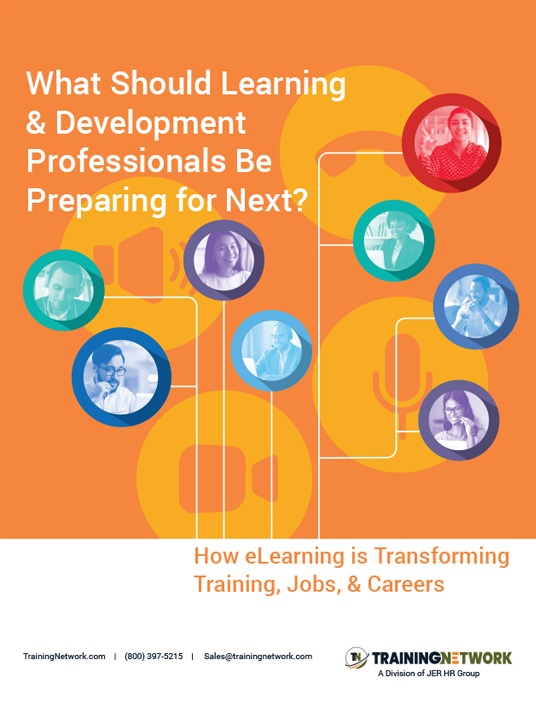Complexity Made Simple
As organizations seek to chart their own path through today’s VUCA environment and its complexity, they are creating unique solutions matched to their needs. As the variation in solution options grows within an industry, the complexity grows too, forcing employers and employees to learn additional techniques, tools, and processes for training, and learning & development.

Complexity is the “C” component of VUCA, which refers to the interconnectivity and interdependence of multiple components in a system. When conducting research, complexity is a component that scholars have to keep in mind. The results of a deliberately controlled environment are unexpected because of the non-linear interaction and interdependencies within different groups and categories.
eLearning And Complexity In A VUCA Environment
The 2020 Workplace Learning Report (LinkedIn Learning) indicates that of the 1,675 L&D Professionals queried, 57% indicate they spend more time with online learning than they did three years ago and 37% spend less time with instructor-led training than they did three years ago.
Today’s HR, Learning & Development, and Training teams are flexing to include remote laptops, tablets, and mobile devices; virtual reality; streaming video, and cloud-based LMS platforms. Blended learning includes face-to-face, virtual, and on-demand, and cloud-based systems that support blended learning are increasingly in demand. User integrated content is rapidly becoming part of content strategies to support the learner’s experience and retention as well.
The 2020 Workplace Learning Report from LinkedIn Learning shows that learners prefer learning in the time and place that fits their work and learning style. “One of the biggest frustrations about learning in the workplace is the amount of time that employees — and sometimes managers — feel they’re wasting in a traditional learning or talent system. Employees just want to get work done and do it right. In fact, a recent study by CEB (a division of Gartner) noted that 57% of employees expect just-in-time learning to ensure they’re proficient in their jobs.”
“Modern learning platforms will be designed to eliminate wasted time and let employees learn in the flow of work. Tying into the enhancement in learner experience, employees will take advantage of just-in-time learning, which will enable them to improve efficiency and gain new capabilities with hands-on, just-in-time and just-for-me information.”
With the trend in learner demographics moving away from Traditionalists and Baby Boomers to Generation X, Millennials, and Generation Z, the workplace learner will continue to demand state-of-the-art technology and personalized learning experiences.
The knowledge-base and decisions required by training and L&D professionals continue to expand as platforms, delivery modes, content requirements—and suppliers, grow exponentially. The days of face-to-face, in-classroom training as a single delivery method will not survive post-pandemic. The asynchronous delivery of content (self-paced learning delivered electronically) and the virtual delivery of content in real-time (synchronous) are here to stay.
Content – Build Vs Buy
In a recent industry survey by LinkedIn Learning, talent developers indicate that of the many activities of the job, the largest chunk of time is spent on building or sourcing learning programs and content (29%) The decision to buy rather than build—or to use a subscription or licensing model versus own—becomes increasingly relevant as the speed of information, demand for compliance, and regulatory updates increase.
Emerging Technologies And New Approaches L&D and Training Professionals Want
All of these trends indicate a move away from the more traditional models to more adaptive, technology-driven delivery models. The transition may be causing uncertainty but the pace of adaptability will most likely quicken as we move through and post-pandemic.
Remote Work - Increasing Collaboration And Team Cohesiveness
In spite of the 2020 phenomena of the virtual workplace in the midst of the COVID-19 pandemic, L&D professionals will need to intentionally provide opportunities for social engagement and collaboration. This need for social connection is even more critical in times of physical separation. Learning collaborative tools is an essential new skill.
Conclusion
Teamwork continues to be essential when studying complexity in the VUCA environment. To expect any one function, much less one individual, to be able to address all the expansive issues in the current global environment is a set up for failure. The leadership and management expectations of L&D and training managers will continue to grow. The eBook What Should Learning And Development Professionals Be Preparing For Next is your one-stop resource to prepare you for what is coming.

